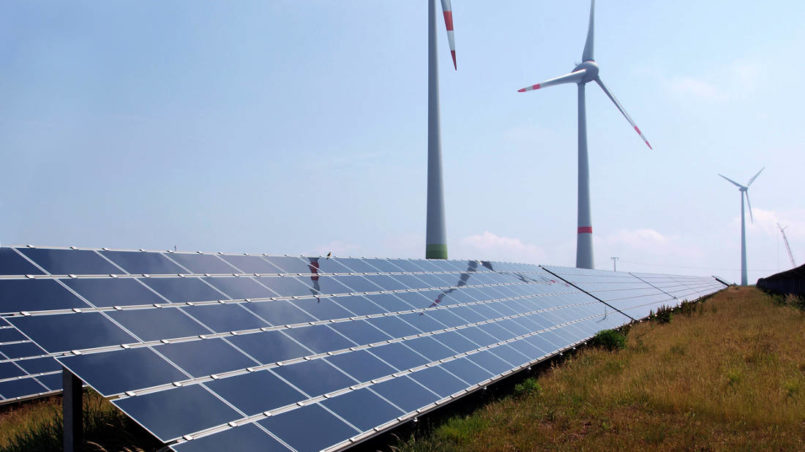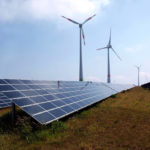New Awareness of Energy – How to escape the dilemma

The internal combustion engine – an end-of-run model, which will unfortunately stick around for some time to come
As already mentioned in the first article of the series, combustion engines are extremely wasteful with the energy they are fed and pollute the environment with highly toxic substances. But even with today’s technology, environmentally friendly cars would not be a big problem. Despite the latest news about a possible ban of cars with combustion engines in several countries, including Germany and Norway, I believe that burners will still be around for a long time.
For the most part the already existing number of cars will be very slow to be replaced by technologies such as the electric car. Here, too, the resource question has to be clarified, since the lithium amounts required for the batteries have to be produced with considerable effort. It is true that no two weeks seem to pass without a revolutionary new battery technology being presented, but in practice there is not much to be seen of them yet. I hope that I am wrong with my forecast, but we should use the time till then to deal with our existing resources in a better way.
Biofuels have gotten a very bad image in recent years, and rightly so. However, this is due not to the abilities of the fuel itself, but to the devastating production conditions. To produce ethanol for gasoline engines, for example, sugar beets, wheat and corn are grown, harvested and fermented to ethanol. In Austria, biodiesel is primarily made from rapeseed. What happens, is that energy crops compete with conventional agriculture. In view of food prices and world hunger, this type of biofuel production should be terminated immediately.
It is already possible today to produce e.g. Biogas (methane) purely from renewable energies. The electricity gained via solar- or wind power is used to produce hydrogen, which is then combined with carbon in a catalyst. This gas can easily be fed into the existing gas networks. By a further step, it is possible to synthesize fuels from the gas, which can be used in conventional combustion engines without further modification . One hydrogen-producing plant is already located in Auersthal, Austria. Audis’s “E-Gas” project is based on the same principle.
Biofuels from waste biomass – BTL “Biomass to liquid”
BTL fuels (eg VW Sunfuel) are another way to convert biomass into usable energy. Here, mainly waste from forestry and agriculture, garden waste, biomass from sewage treatment plants, and used vegetable oil from restaurants and the food industry can be used to produce gasoline, diesel or kerosene.
Decentralized and local production means that resource conflicts in oil-rich regions are excluded. The value chain also remains in the country. A win-win-win situation.
When Rudolf Diesel developed his diesel engine at the end of the 19th century, he was fully aware of the scope of his invention, as is so often the case with people ahead of their time. He knew that first of all, the military would be interested in his engine, because war machines powered by the auto-ignition, could be much more powerful and less noticeable than conventional coal-powered vehicles.
But what hardly anyone knows: Rudolf Diesel presented an engine at an early stage, which could be operated with vegetable oil (peanut oil, in this case). But the stone had long since started to roll and the better idea came too late. The rest is, unfortunately, history. Diesel engines can also be operated with (preferably used) vegetable oil today. The conversion effort varies depending on the technology, the design used and the age of the motor. If you are interested, you can inform yourself at biotrieb.
The combustion engine on a diet
Typical consumption values of cars are about 5-7 liters of diesel / gasoline on 100km. Here, too, there is still plenty of potential savings to relieve nature and the environment. Classic hybrid cars use e.g. The brake energy to charge their batteries. Parts of this otherwise lost energy is then available to the car again.
The PSA Group (Citroen / Peugeot) pursues the same goal with their Air Hybrid system, but with an amazing trick. The energy from the brake system or the engine brake is used to compress air into pressure tanks. A second motor operated with air can thus support the primary combustion engine. According to PSA, consumption values of less than 3 liters per 100 km are realistic in the urban area – and this with modern medium-class cars. The very consumption-intensive urban transport could thus benefit from savings of up to 45%. And all this with ambient air and a compressor!
Since sometimes more than 70% of the energy obtained in the fuel just uselessly goes to waste as heat, a few tricks can be used here as well. Materials which can utilize the heat of the exhaust gas could be used to produce electrical energy, for example, thus helping to supply the electrical loads in the car, which relieves the engine, leading to further savings. Even the shock absorbers in the car are suitable to absorb the energy losses that occur during road bumps and to make them recyclable in the form of electric current.
The first test systems can achieve up to 600 watts of continuous power, depending on the condition of the road. Thin, light and flexible solar panels on the front or on the roof of the car would be another long overdue step as the prices for such panels have fallen dramatically in recent years and it would be technically feasible without any problems or even great effort.
If you think that you can only get the thurst out of the car with the use of high-tech, you’re wrong. As so often in history, there were people and teams who were simply ahead of their time as recently as the late last century. A wonderful example is the VW Eco Polo. A car developed in 1987 (!), consuming only 1.7 liters of diesel per 100 kilometers. Unfortunately the cost was too high, and the fuel price too cheap.
Renault’s Twingo Smile from 1996 shows just what can be done with low-tech. Without any technical frills, a gasoline car was built which, by its modifications, e.g. weight reduction, roll- and air resistance reduction and an optimized engine, reached a gasoline consumption of less than 3 liters to 100km, thus achieving a reduction by 50% compared to the serial Twingo.
In the fourth and, for the time being, last part of the series, I would like to take a look into the future, but without neglecting the past, because astoundingly many modern-looking alternatives to the fossil delusion were, as we have already seen, conceived long ago. Their time had simply not come because of the cheap oil.
Translation from German: Serena Nebo
Credits
| Image | Title | Author | License |
|---|---|---|---|
 |
Renewable Energy | Kuebi = Armin Kübelbeck | CC BY-SA 3.0 |
